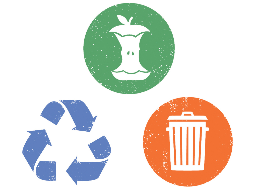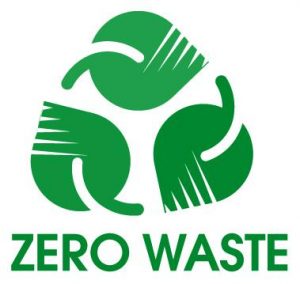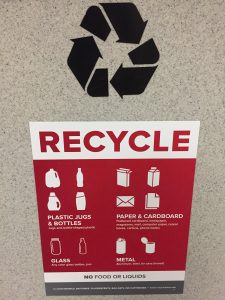Waste Disposal: Recycling and Composting
The issue I picked to explore is waste disposal. Proper waste disposal is important to living a sustainable lifestyle. I selected this topic so that I could learn how to make Ohio State more sustainable. The policies for recycling and composting are different from community to community. There are barriers that people need to overcome to be able to recycle and compost.
Root Causes and Challenges
- Lack of accessibility to recycling and composting utensils
- Recycling is inconvenient
- No time to clean and transport recyclables
- No time to compost
- Forgetfulness
- Ignorance/lack of knowledge
- People do not think recycling or composting makes a difference
- People do not think it is important
- People do not understand how composting and recycling benefits the environment
- People do not see immediate consequences of failing to recycle, so they do not make an association between their wasteful habits and the harm they bring to the environment.
- Limited outdoor space for composting
- Pests and smells that composting is associated with
Current Policies Addressing Waste Disposal
The United States does not have policies that mandate recycling. It has policies about proper landfill waste disposal and it talks about how to recycle and what recycling does. America relies on state or local governments to take care of waste disposal and recycling.
The Ohio State Community has a goal to have zero waste by 2025. This means that 90% of waste is kept from going to landfills. Ohio State finds it important to provide people with the knowledge and opportunities to recycle, compost, and prevent wasteful habits. Ohio State provides campus with recycling bins, cardboard bailers, pulper systems, and a bio-digester.
10 Actions an Individual Can Take to make an Impact with Reducing Waste
- Trade out paper towels for air dry and cloth towel drying. *
- Get advice and permission to set up a compost system for your living area. *
- Educate yourself on the recycling and composting policies of cities that you normally live in or visit. *
- Spend 5 days using your normal habits of waste disposal (keep all trash), then spend 5 days working hard to use no materials that will go to a landfill (keep all things that aren’t recycled or composted). Compare the differences in your trash- you will see a little bit of effort does make a difference. *
- Make your own tooth paste *
- Educate your neighborhood on what can be composted and what cannot (do the same with recycling)
- Purchase food that you know you will eat- do not buy food you will end up throwing away.
- Separate food waste from non-food waste and take it to an anaerobic digestion facility
- Donate your clothes and purchase them from second-hand stores
- Bring your own cup when you go out- do not purchase drinks in non-recyclable/compostable materials
The Ohio State University Composting
- Sometimes napkins, paper towels, and tissues
- Pulper systems- turn food waste to biomass for biogas for electricity
- Bio-digester- food waste made into greywater effluent for safe disposal/reduce landfill material
Hailey Perkins has recruited me to help floor 10 of Morrill Tower get a composting system. We have spoken to Carlos Lugo, program manager for sustainability at Ohio State. He has given us the contact information of students who have started tiny composting projects in Blackburn and Scott House. Carlos also talked to us about Ohio State’s agenda for sustainability.
Recommendations for Taking Action
Starting a program for recycling or composting is hard. Consult people who oversee sustainability for the area you are targeting. Also talk to people who have started their own recycling or composting system. Get advice on how you should implement your program. There are more factors to starting a recycling or composting program than just buying a bin. You must address pests, smells, improper disposal, and other issues. The more people you consult, the more successful your program can be.
If you feel that starting a program is too much to handle, work on your own habits and make them more sustainable. A little effort goes a long way. Cut out waste from your week by avoiding the use of paper towels, not buying water in plastic bottles, or making your own toothpaste. If you feel one action was too easy, start another sustainable habit. Small changes can make a difference.
Handout
Waste Disposal: Recycling and Composting
Maggie Eding eding.2@osu.edu
The issue that I have picked to explore is waste disposal. I selected this topic so that I could learn what should be recycled, composted, or thrown in the trash. The root causes of people not using sustainable waste disposal include lack of accessibility to proper waste disposal tools, lack of knowledge on recycling/composting, believing recycling and composting do not make a difference, and lack of time to keep up with a recycling/composting system.
- The Ohio State University is currently addressing waste disposal. They aim to be a zero-waste university by 2025.
- Recommendations for Taking Action
- Seek help and advice from others when you start your own recycling or composting program. The more people you consult, the more successful your program can be.
- If you feel that a program is too much to handle, try to create a sustainable habit. A little effort goes a long way.
Works Cited
City of Sylvania Refuse, Recyclables and Green Yard Waste Collections. The City of Sylvania, www.cityofsylvania.com/wp-content/uploads/2017/02/Refuse_and_recycling-general_rules_02212017.pdf.
“Composting and Recycling.” University Dining Services, The Ohio State University, dining.osu.edu/sustainability/composting-and-recycling/.
“Composting At Home.” EPA, Environmental Protection Agency, 20 Mar. 2017, www.epa.gov/recycle/composting-home.
“Recycling.” Recycling | Facilities Operations and Development, The Ohio State University, fod.osu.edu/sustainability/projects-and-services/recycling.
“Recycolumbus.” 311 Columbus Recycling FAQ, The City of Columbus, www.columbus.gov/uploadedfiles/Public_Service/Refuse_Collection/RecyColumbus/311%20Columbus%20Recycling%20FAQs%20updated%2010-24-12.pdf.
Schumaker, Erin. “The Psychology Behind Why People Don’t Recycle.” The Huffington Post, TheHuffingtonPost.com, 3 Aug. 2016, www.huffingtonpost.com/entry/psychology-of-why-people-dont-recycle_us_57697a7be4b087b70be605b3.
Wendeln, Jen. “’I Want to Compost, but…’.” Sustainable America Blog, Sustainable America, 3 June 2014, www.sustainableamerica.org/blog/i-want-to-compost-but/.
“Why No National Recycling Law in the U.S.?” Business Ethics, 21 Nov. 2010, business-ethics.com/2010/11/21/why-no-national-recycling-law-in-the-u-s/.

















